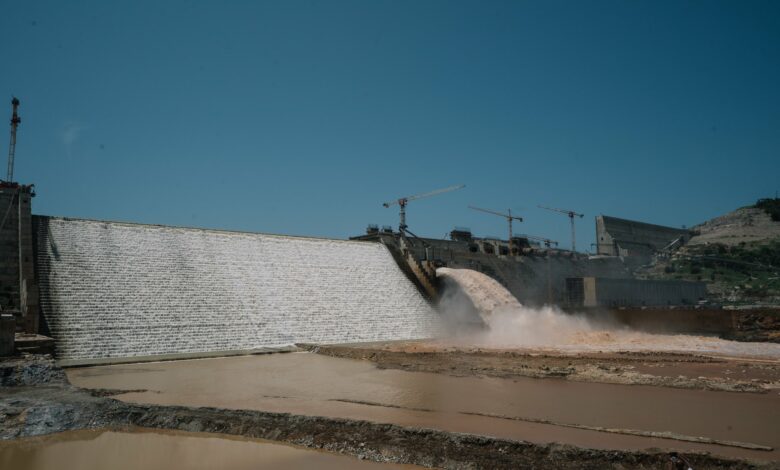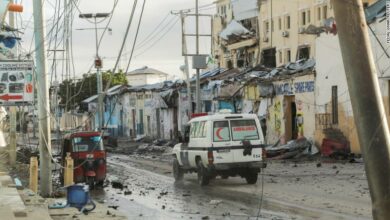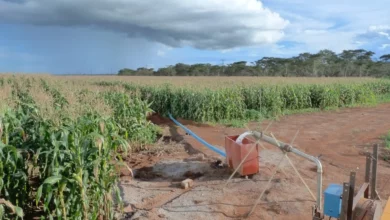
Reports have stated that Ethiopia started concrete work to the body of the Grand Ethiopian Renaissance Dam, especially on the western side, in preparation for the third filling, Professor of Water Resources and Geology at Cairo University, Abbas Sharaky, said.
According to satellite images, the current reservoir of the Renaissance Dam is about 7 billion cubic meters at 575 meters above sea level, a decrease of one billion cubic meters since the opening of the drainage gate on March 12, and a decrease of three billion cubic meters from the highest level at the end of the flood in October 2021, which reached 580 meters, and then settled after the flood at 576 meters above the sea level, Sharaky added, through his account on Facebook, Thursday.
The total storage of the first and second fillings thus in the past two years is eight billion cubic meters, he said.
As shown in pictures, on April 14, turbine No. 10 worked while the flow of water continued through one of the two drainage holes. Some islands showed as a result of low storage level, he said.
Sharaky explained that Ethiopia is targeting a third storage of about 10 billion cubic meters by heightening the dam by 20 meters, equivalent to about 1.3 million cubic meters of concrete, which is impossible in the time period remaining for the new flood (
which begins in less than three months.
Negotiations over the GERD have officially stopped since April 2021, after Egypt, Sudan and Ethiopia failed to reach an understanding before the start of the second filling of the dam, which Ethiopia implemented in July.
Cairo and Khartoum reject Ethiopia’s insistence on filling the dam before reaching a binding agreement on filling and operation.
Egypt, which relies considerably on freshwater from the Nile, has voiced fears that the GERD would negatively impact the country’s water supply.
Egypt has also insisted that measures be put into place to protect downstream countries in case of drought during the dam’s filling process.
Egypt and Sudan say they want a legally binding agreement, while Ethiopia says any pact should be advisory.
Egypt and Sudan consider the dam a threat to their vital water supplies, while Ethiopia considers it essential for development and doubling its electricity production.
The downstream nations fear possible blows to water facilities, agricultural land, and overall availability of Nile water.
Negotiations over the dam between Egypt, Ethiopia, and Sudan have stalled for years, with the three parties ultimately failing to reach any concrete agreement.
The disputed dam is the largest hydroelectric project in Africa, with a cost of more than four billion dollars. The construction of the dam began in 2011.
It is considered to be one of Egypt’s most serious water issues.



